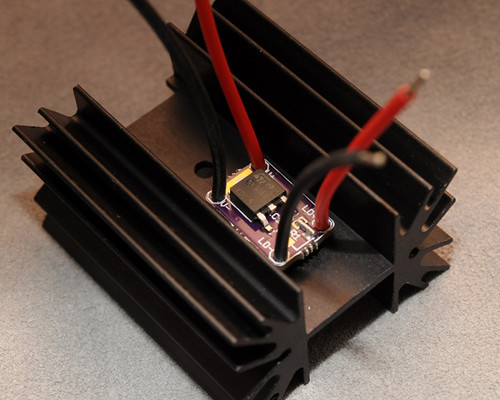I'm just chiming in here to tell you guys, that as of recently and as a consequence of
this thread, I am using two LM317
in parallel, each one with it's own independent adjustable resistor for current control, and they both behave fine.
Otherwise I have it just the same like on rhd's diagram, with input and output pins parallel'd together.
I do have a hefty 16V 1000uF capacitor on the output, I don't know if that is
key for the stability, since it has always been there.!
On the input side, I even have a 16V 2200uF cap.
Overkill much? When I turn off the laser, it keeps glowing dimly for almost a minute.

One problem I am having though: each LM317 on it's own is able to provide about 1.2A
with the resistors I am using, but I cannot seem to get the combined output to more
than ~1.6A. It's probably better for the diode anyway that it doesn't go higher!
Might be a battery issue....
I'll look into that when I add the capabilty of connecting a line transformer 12V 2A...
this thread, I am using two LM317
in parallel, each one with it's own independent adjustable resistor for current control, and they both behave fine.
Otherwise I have it just the same like on rhd's diagram, with input and output pins parallel'd together.
I do have a hefty 16V 1000uF capacitor on the output, I don't know if that is
key for the stability, since it has always been there.!
On the input side, I even have a 16V 2200uF cap.
Overkill much? When I turn off the laser, it keeps glowing dimly for almost a minute.
One problem I am having though: each LM317 on it's own is able to provide about 1.2A
with the resistors I am using, but I cannot seem to get the combined output to more
than ~1.6A. It's probably better for the diode anyway that it doesn't go higher!
Might be a battery issue....
I'll look into that when I add the capabilty of connecting a line transformer 12V 2A...






